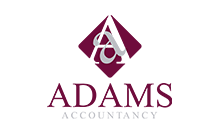Mastering your finances: How a cash flow forecast keeps your business afloat

Have you ever been worried that you might not have enough cash in the bank to make payroll or pay an important supplier? These worries can lead to sleepless nights and stress, but managing your cash flow well is much easier when you have an up-to-date cash flow forecast statement. When you know what’s in the bank and when cash is coming in and out of your account, you can get on with running your core business knowing your company won’t be facing a cash crisis. In this blog, we’ll explore how to master your finances using a cash flow forecast.
WHAT IS A CASH FLOW FORECAST
All business owners should use a cash flow forecast regularly. You’ll be able to easily see the amount of money flowing in and out of your business, so you can mitigate potential cash shortages and plan for more effective use of any cash surpluses. The cash flow forecast gives you confidence in your company’s solvency and peace of mind knowing you have the cash in the bank to meet your obligations.
WHY IS CASH FLOW FORECASTING IMPORTANT?
Cash flow forecasting enables you to:
- Avoid cash shortages. If you can see in advance when the cash pinch points are, you can take proactive measures to avoid shortages.
- Plan for growth. A forecast shows you when you’ll have excess cash for reinvesting in your business.
- Enhance investor confidence. Investors and lenders want to see that you have a solid grasp of your finances. A well-prepared cash flow forecast can help build their confidence in your business.
HOW TO CREATE A CASH FLOW FORECAST
Here’s how to create a simple cash flow forecast for your business:
1. List all incomings: Start by listing all sources of income, such as sales revenue, loans, investments, and any other sources of cash. Estimate the timing and amount of each inflow.
2. List all outgoings: Next, list all your expenses, including rent, utilities, payroll, supplies, and loan repayments. Again, estimate the timing and amount of each outflow.
3. Calculate the net cash flow: Subtract your total cash outflows from your total cash inflows for each period. This will give you your net cash flow. If your net cash flow is positive in every month, then your business should have sufficient funds to pay its bills. If your net cash flow is negative, this indicates you might have a problem which could require you to find additional funding to keep your business solvent. If your net cash flow remains negative for too long, this suggests your business model is not sustainable.
4. Update regularly: Your cash flow forecast should be a living document that you update regularly. This will help you stay on top of your financial situation and adjust your plans as needed.
You can review an example of a cash flow statement from the Harvard Business School to give you a better understanding the benefits of using a forecast.
TIPS FOR EFFECTIVE CASH FLOW MANAGEMENT
Business owners who look after their cash carefully are much less likely to run into trouble. Here are some practical tips to help you manage your cash flow effectively.
MONITOR YOUR CASH FLOW REGULARLY
Keep a close eye on your cash flow by updating your forecast weekly, fortnightly or monthly. Spot any issues early and act quickly.
NEGOTIATE SUPPLIER PAYMENT TERMS
Ask your suppliers for longer payment terms to keep more of your cash in your bank account for longer.
CUT UNNECESSARY COSTS
Look for areas where you can cut costs without affecting your business operations.
INVOICE AND COLLECT DEBTS QUICKLY
Don’t allow invoices to become overdue; the older an unpaid invoice gets, the less likely you are to collect the money. Do due diligence on customers before granting credit terms.
REDUCE INVENTORY
Holding too much stock ties up your cash. Minimise your stock levels while maintaining acceptable order fulfilment times for your customers. Consider discontinuing less popular and less profitable product lines to optimise your inventory.
BUILD A CASH RESERVE
Aim to cover at least three to six months of operating expenses. This will give you a cushion in case of unexpected expenses or cash flow shortages.
USING YOUR CASH FLOW FORECAST TO IMPROVE DECISION MAKING
A cash flow forecast is more than just a financial document—it’s a powerful decision-making tool. Here’s how you can use it to make informed business decisions:
- Plan for large expenses: Use your forecast to plan for large expenses, such as equipment purchases or marketing campaigns at times when your bank account is not under pressure from other commitments.
- Identify financing needs: If you predict a cash shortage on your forecast, act quickly to explore financing options, such as a bank loan or business credit card. You’ll have time to shop around for the best deal rather than panicking at the last minute and having to accept an expensive credit facility.
- Evaluate business opportunities: A cash flow forecast can help you evaluate new business opportunities by showing you the potential impact on your cash flow. For example, you might use it to assess the feasibility of launching a new product or expanding into a new market.
HOW ADAMS ACCOUNTANCY CAN HELP YOUR BUSINESS STAY SOLVENT
Mastering your finances is essential for the long-term success of your business, and a cash flow forecast is a useful tool in this process. By creating and regularly updating your forecast, you’ll have the cash you need to keep your business afloat, plan for growth, and make informed decisions. Don’t wait until you’re facing a cash crisis—start forecasting your cash flow today and take control of your company’s future. If you’ve never used a cash flow statement before, you might need a little help to create your first forecast. Give us a call on 01322 250 001 or complete our online contact form.


